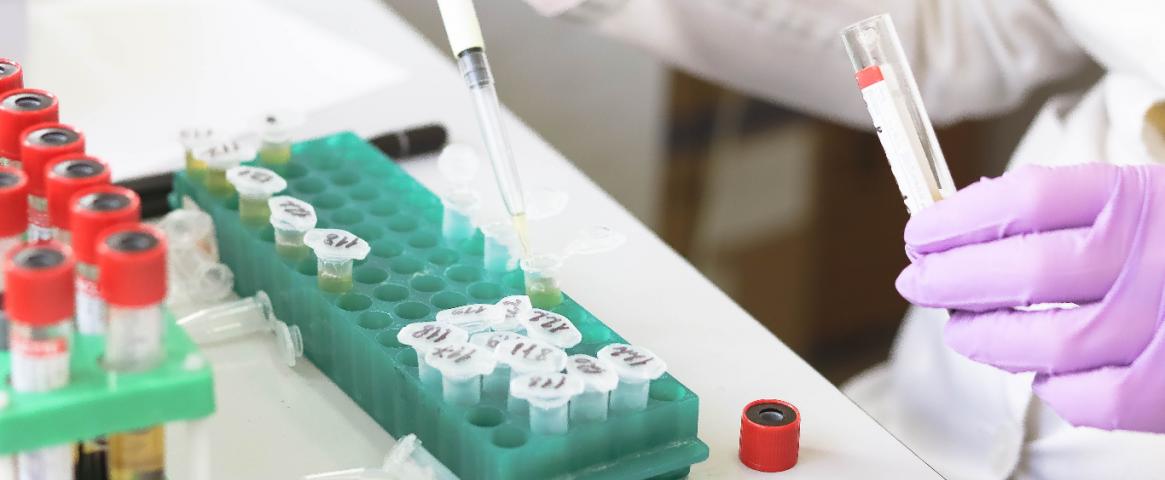By Lauryne Jean-Baptiste. Mentored and edited by Jodi Frank.
One hurdle that continually faces modern society is the prevalence of stubborn diseases. Understanding and disrupting molecules called iron-sulfur clusters (FeS) could be a key to developing drugs against challenging bacterial and viral pathogens.
During the American Association for the Advancement of Science Annual Meeting held virtually in February, researchers from Scripps Research and the National Institute of Child Health and Human Development (NICHD) discussed how they are honing in on the molecule’s biological role to develop treatments for COVID-19 and other diseases like tuberculosis (TB) and malaria.
FeS clusters, molecules composed of iron and sulfide, are found in proteins that function as chemical helpers, or “cofactors,” in a litany of biological processes. These include nitrogen fixation, replication, and cellular respiration.
FeS clusters are ubiquitous in nature, found in virtually all living things. Tracey Rouault, a leading researcher at NICHD, spotlighted her investigation of these clusters, which has led to a COVID-19 antiviral candidate that inhibits FeS function.
TEMPOL (standing for 4-hydroxy-2,2,6,6-tetramethylpiperidine-N-oxyl) is a molecule that breaks down FeS, halting the cluster-containing enzyme that allows the virus to reproduce. It’s like sticking a big wad of gum into the gears of an assembly-line machine. The gears get stuck, the machine stops working, and the assembly line grinds to a halt.
“Iron-sulfur clusters are highly susceptible to … damage. They’re so sensitive and hard to protect,” said Rouault. Because they are so vulnerable, she added, the clusters are a weak point that researchers can exploit. When the hard-to-protect cluster is broken down, a pathogen’s ability to reproduce, protect itself or make nutrients is zapped.
Rouault’s team employed a hamster model to explore using TEMPOL to deactivate nsp-12, an iron-sulfur protein found in RNA replicase, which is an enzyme critical for replication. They found that untreated hamsters had lung tissue “full of fluid and inflammatory cells,” unable to take in oxygen, while treated hamsters’ tissues remained functional. The most momentous detail about TEMPOL is its potential accessibility.
The few available COVID-19 antiviral treatments must be administered by health professionals or, like Paxlovid, are available by prescription only. Rouault said a TEMPOL-based drug that her team is developing could potentially be offered as an over-the-counter antiviral.
The drug, dubbed “Tempol” based on the same name as the molecule, would be easily self-administered as an oral drug, according to Rouault. The U.S. Food and Drug Administration has greenlighted further studies of Tempol to test its safety, and clinical trials are now underway.
Another presenter, Louis Noodleman, professor emeritus at Scripps Research, discussed developing computational screening models used to find FeS compounds in other proteins, which scientists can then target to develop new drugs. His colleague, Kate Carroll of Scripps Research, “did much of the research into the structure, function, and inhibitors of APS reductase,” an FeS-containing enzyme that allows the TB bacterium to protect itself from our immune system.
The enzyme does this by breaking apart adenosine phosphosulfate (APS) into sulfite through a reduction reaction. This is then used to produce nutrients like cysteine in what is called a “sulfur assimilation pathway.” This pathway is vital to the bacteria’s growth and survival when faced with nitrogen and oxygen-based chemical attacks from immune cells.
Studies have shown that when the enzyme is disabled, the bacteria’s ability to infect, survive, and kill is reduced. Noodleman’s job was to devise a method to pinpoint effective binding agents that stop the enzyme in its tracks and determine the exact role FeS plays in APS reductase, besides helping it bind to its target.
“People knew that there were certain functions for iron-sulfur clusters … but did not understand the scope involved ...,” said Noodleman, adding that FeS clusters can be found in all kingdoms of life.
Noodleman, who has studied FeS clusters since the 1980s, says the method could be used to screen for potential drug candidates against TB, pseudomonas, and malaria. Iron-sulfur enzymes IspH and IspG, for example, are vital to the structural integrity of pathogens such as malaria.
Treatment for TB is typically longform and involves four different drugs in efforts to stave off antibiotic resistance. Expanding the avenue to new drugs will help combat the engrossing threat of multidrug-resistant TB. This points toward a brighter future for the billions affected by TB globally and the 1.5 million lives it claims annually. In terms of disease lethality, TB finds itself second only to COVID-19 which, according to the World Health Organization, is now the number one infectious killer globally.
Lauryne Jean-Baptiste is a junior undergraduate student at the University of Florida pursuing a degree in microbiology with a minor in English. She is enthusiastic about all things biology and environmental science and is currently interning as a student field researcher in the Undergraduate Coral Research Initiative of the National Science Foundation. You can reach her by email at l.jeanbaptiste@ufl.edu.
Photo: Scientist pipetting solution into Eppendorf tubes. Credit: Piqsels.com

